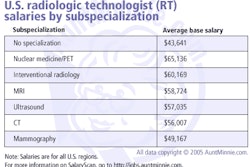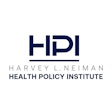

Extremely successful companies deliberately make choices to be unique and different in areas in which they excel, and then focus energy in these areas to build a competitive advantage. Unfortunately, at times the focus is entirely on the product end of the business -- leaving the customer relationship overlooked or underemphasized.
Understanding your competitive advantage is critical because it is the reason that keeps you in business, but knowing and cultivating customer relationships may be the decisive factor in sustaining a competitive position.
In the radiology market, often small subtleties differentiate businesses. You trust that your customers will find value in these subtleties. But will these small service differences cause a customer to drive across town or pay out-of network fees?
Ultimately customer loyalty, which is nurtured by strong customer relationships, is what affects attitudes about your brand. These relationships stimulate customers to continue using your services, which provides a continuing opportunity to reinforce that personal relationship with your brand.
Obviously, radiology businesses cannot provide services without technology and qualified radiologists, but are referrals driven by the technology offerings and radiologist's expertise? This becomes a very important question when evaluating the purchase of a new 64-slice CT scanner, a 3-tesla MRI unit, or a PET scanner.
Our research into physician referral assessments in the U.S. has led us to conclude that the relationships that your business builds with referring sources, patients, and payors may be your key competitive advantage.
Here are the hard and cold facts: Roughly 70% of all new products (radiology service offerings) can be duplicated within one year, and 60% to 90% of process improvements (learning) eventually diffuse to competitors. And everyone knows competing on price is never sustainable, especially in healthcare.
Most radiology providers are very conscientious about their service performance, and most providers are in a constant cycle of upgrading their technology to provide the latest innovations. This makes identifying the differentiating elements of your business very difficult -- especially when trying to emphasize these differences in messaging points to your customers.
So what is your company's competitive advantage? Do you have one and are you focused intently on it? Most importantly, is your competitive advantage focused on the real needs and wants of your customers, or is it formed on the basis of pure assumption?
Some of these statements may sound familiar:
- "We're better than they are. They'll never do ________ as well as we do."
- "Our competitors are too big and slow. They'll never respond quickly."
- "All we need is a key service offering ________. Let's purchase the ________. They'll never touch us."
- "We'll have first-mover advantage. We were first in the market. That makes us the experts."
- "No one knows our customer like we do."
- "My competitors are too stupid. Our team has much more expertise and is more innovative."
- "There is no one else in our market that does what we do."
- "They know who we are and they like us."
- "Our radiologists have extensive fellowships."
- "We have 24-hour turnaround."
Based on our studies, referring physicians ultimately want accurate and prompt reports. Their office staffs want hassle-free scheduling and prompt, courteous, and reliable service. Although the basic needs are the same across the U.S., geographically, some differences do exist, as do the referral drivers in individual markets.
It is critical to identify what your customers value and list their service expectations. Map how your services will meet those needs and then outperform competitors.
Our studies have determined that radiology businesses that invest resources to cultivate strong two-way communication with the referring physician's office, their patients, and payors build trust and commitment -- which ultimately define customer satisfaction. This builds relationships and this becomes your competitive advantage.
So is your competitive advantage driving customer loyalty? Talk to and survey your customers and identify what is important to them. What is it that they value in this relationship? Then work feverishly on exceeding their service expectations and communicate regularly with them.
It's all about people doing business with other people and performing on promises made to them. Strategically cultivated customer relationships are a key driving force to defining your competitive advantage and maximizing customer loyalty.
By Elsa Ozuna-Richards
AuntMinnie.com contributing writer
June 6, 2005
Elsa Ozuna-Richards is president of REA Healthcare Strategies of Reno, NV, a consulting firm focusing on healthcare marketing and practice management. The firm specializes in developing marketing programs for practices and vendors. It also has extensive experience in providing medical practices with strategic planning, project management, and customer-service training programs. The firm can be contacted via phone at 775-829-2299 or via its Web site.
Related Reading
Impactful Marketing in Healthcare, May 14, 2004
Making your practice known on the Web, December 23, 2002
Customer service begins at the top, November 22, 2002
Medical conferences bring market muscle to imaging center technology, November 5, 2002
Building a successful new imaging center program, October 8, 2002
Copyright © 2005 REA Healthcare Strategies



















